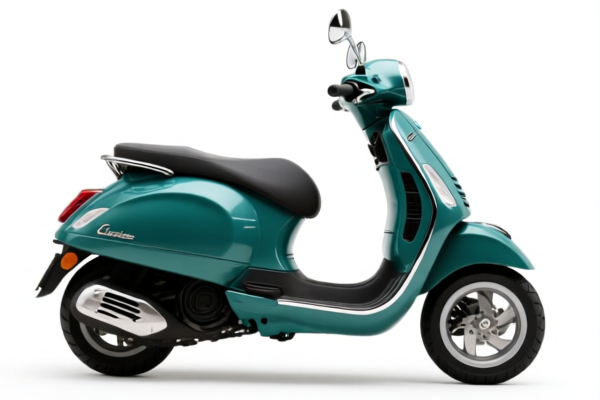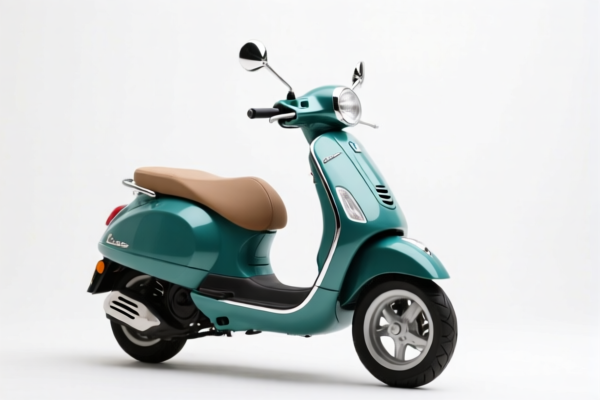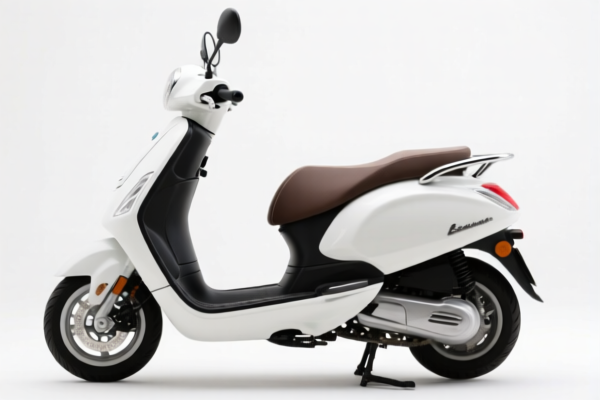| HS Code | Official Doc | Tariff Rate | Origin | Destination | Effective Date |
|---|---|---|---|---|---|
| 8712005000 | Doc | 3.7% <u></u>+55.0% | CN | US | 2025-05-12 |
| 8711600050 | Doc | 55.0% | CN | US | 2025-05-12 |
| 8711600090 | Doc | 55.0% | CN | US | 2025-05-12 |




Scooters
Scooters are a class of vehicles, typically featuring a step-on platform for the rider and handlebars for steering, propelled by human power, or an engine. They are utilized for personal transportation, recreation, and sport.
History
The earliest documented scooter-like designs appeared in the late 19th century, but modern scooters gained popularity in the 20th century with the advent of motorized versions. Kick scooters experienced a resurgence in the late 1990s and early 2000s, and electric scooters have seen significant growth in recent years.
Types
Scooters can be broadly categorized into several types:
- Kick Scooters: These are propelled by the rider pushing off the ground with one foot while standing on the deck. They are typically constructed with aluminum, steel, or carbon fiber frames.
- Two-wheeled Kick Scooters: The most common type, suitable for casual riding and commuting.
- Three-wheeled Kick Scooters: Offer increased stability, often favored by younger children or those seeking a more balanced ride.
- Motorized Scooters: These utilize a gasoline engine or electric motor for propulsion.
- Gasoline Scooters: Traditionally powered by small internal combustion engines, offering longer ranges but requiring fuel and maintenance.
- Electric Scooters (e-scooters): Powered by rechargeable batteries, offering a quieter, more environmentally friendly option. Often used in urban environments for "last mile" transportation and sharing programs.
- Vintage/Vespa-style Scooters: Characterized by their step-through frame, enclosed engine compartment, and classic Italian design. Typically gasoline-powered.
- Stunt Scooters: Designed for performing tricks and maneuvers in skateparks or designated areas. Features a reinforced frame, non-slip deck, and durable wheels.
- Mobility Scooters: Electric powered scooters designed for individuals with mobility impairments, featuring a seat and controls for easy operation.
Materials
Common materials used in scooter construction include:
- Aluminum: Lightweight and durable, frequently used for frames and decks.
- Steel: Strong and affordable, often used in lower-cost scooters and components.
- Carbon Fiber: Extremely lightweight and strong, used in high-performance scooters and stunt models.
- Plastic/Polymer: Used for decks, fenders, and other non-structural components.
- Rubber/Polyurethane: Used for tires and grips.
Function & Usage Scenarios
- Commuting: Electric scooters and kick scooters are used for short-distance travel, particularly in urban areas.
- Recreation: Kick scooters are popular for leisure riding and exercise.
- Sport: Stunt scooters are used for performing tricks and participating in competitions.
- Last Mile Transportation: Electric scooters are frequently used to bridge the gap between public transportation and a final destination.
- Accessibility: Mobility scooters provide increased independence for individuals with limited mobility.
Safety Considerations
- Helmets: Recommended for all scooter riders.
- Protective Gear: Knee pads, elbow pads, and wrist guards are recommended, especially for stunt riding.
- Traffic Laws: Riders should be aware of and comply with local traffic laws and regulations.
- Visibility: Wearing bright clothing and using lights can increase visibility.
- Maintenance: Regular maintenance, including brake checks and tire inflation, is essential for safe operation.
The declared goods are scooters. Based on the provided information, scooters may fall under several classifications depending on their motorization and specifications.
Here are the relevant HS codes:
-
8712005000: Bicycles and other cycles (including delivery tricycles), not motorized: Other cycles. This code applies to scooters that are not motorized.
- 87: Chapter 87 covers Vehicles other than railway or tramway rolling-stock, and parts and accessories thereof.
- 12: Heading 8712 specifically covers bicycles and other cycles (including delivery tricycles).
- 005000: This subheading denotes "Other cycles," encompassing non-motorized scooters. The basic tariff is 3.7%, with an additional surcharge of 25.0%. After April 2, 2025, the surcharge increases to 30%. The total tariff rate is 3.7% + 55.0%.
-
8711600050: Motorcycles (including mopeds) and cycles fitted with an auxiliary motor, with or without side-cars; side-cars: With electric motor for propulsion Of an output not exceeding 250 W. This code applies to scooters powered by an electric motor with an output of 250 W or less.
- 87: Chapter 87 covers Vehicles other than railway or tramway rolling-stock, and parts and accessories thereof.
- 11: Heading 8711 specifically covers motorcycles (including mopeds) and cycles fitted with an auxiliary motor.
- 600050: This subheading denotes scooters with an electric motor for propulsion, with an output not exceeding 250 W. The basic tariff is 0.0%, with an additional surcharge of 25.0%. After April 2, 2025, the surcharge increases to 30%. The total tariff rate is 55.0%.
-
8711600090: Motorcycles (including mopeds) and cycles fitted with an auxiliary motor, with or without side-cars; side-cars: With electric motor for propulsion Other. This code applies to scooters powered by an electric motor with an output exceeding 250 W.
- 87: Chapter 87 covers Vehicles other than railway or tramway rolling-stock, and parts and accessories thereof.
- 11: Heading 8711 specifically covers motorcycles (including mopeds) and cycles fitted with an auxiliary motor.
- 600090: This subheading denotes scooters with an electric motor for propulsion, with an output exceeding 250 W. The basic tariff is 0.0%, with an additional surcharge of 25.0%. After April 2, 2025, the surcharge increases to 30%. The total tariff rate is 55.0%.
Customer Reviews
No reviews yet.